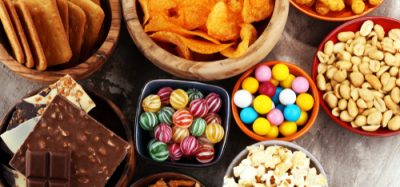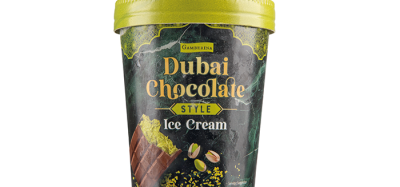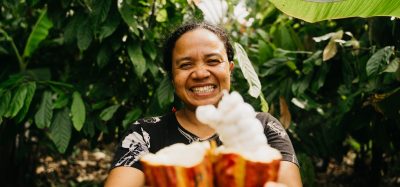Low/no: this is just the beginning
- Like
- Digg
- Del
- Tumblr
- VKontakte
- Buffer
- Love This
- Odnoklassniki
- Meneame
- Blogger
- Amazon
- Yahoo Mail
- Gmail
- AOL
- Newsvine
- HackerNews
- Evernote
- MySpace
- Mail.ru
- Viadeo
- Line
- Comments
- Yummly
- SMS
- Viber
- Telegram
- Subscribe
- Skype
- Facebook Messenger
- Kakao
- LiveJournal
- Yammer
- Edgar
- Fintel
- Mix
- Instapaper
- Copy Link
Posted: 5 March 2022 | Christopher Lackner | No comments yet
Following New Food’s Food Bev Horizons conference, wherein we asked, ‘Is this the end of alcohol?’, Co‑founder of jeng, Christopher Lackner, gives his expert view on the future of US drinking habits.
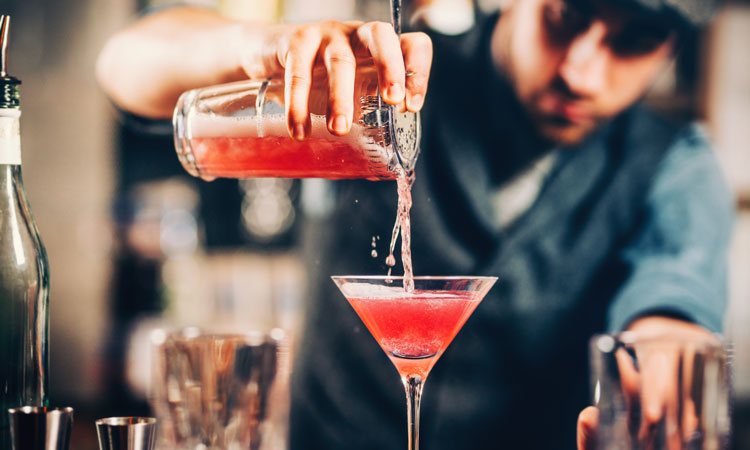

Last December, I joined Lauren Chitwood of Spiritless1 and Miles Moser of Brooklyn Brewery2 at New Food’s Food Bev Horizons US Online Summit for a panel discussion that was ominously entitled ‘Is this the beginning of the end for alcohol?’
As representatives from an alcohol-free, ready‑to‑drink cocktail company,3 an NA (non‑alcohol) spirit company and a brewery with a major presence in the alcohol-free market, you’d think the consensus would have been an emphatic, “Yes, alcohol is dead!”. Curiously enough, that was not the case. In fact, we unanimously agreed that alcohol was here to stay.
A 9,000-year-old product doesn’t go away overnight and, to borrow a line from American writer Mark Twain, rumours of alcohol’s death have been greatly exaggerated. In fact, from an industry perspective, alcohol is very much alive. The Brewers Association estimates the beer market to be worth $94.1 billion.4 Distilled spirits are thriving (especially the brown ones)5 and despite wine showing some decline6 and hard seltzers levelling off,7 there’s no indication that either of these categories are headed toward oblivion.
What does that mean for the no/low alcohol industry? Is it a fad, a trend, a movement, or a new way of life? To answer that question, it helps to understand the cultural, technology, policy and marketing changes that have occurred in recent years. We should also consider how framing temperance as being ‘alcohol-free’ or ‘sober curious’ has changed the way we view – and react to – people who choose not to drink. Finally, we must recognise the role that legal cannabis is having on the social lives of American consumers.
Culture
The cultural trend towards improved mental and physical health is perhaps one of the biggest drivers for the no/low industry. People of all ages are rethinking their relationship with alcohol for a variety of reasons. Hangovers and depression can get a little old after a while, as can the strain on relationships, lost work hours, liver damage, tattoo removal costs8 and other consequences of alcohol overindulgence.
According to the US National Institutes of Health, 54.9 percent of people aged 18+ reported that they drank alcohol in the past month.9 Of those, 47 percent (and 66 percent of Millennials) are trying to reduce their alcohol consumption.10
For many health-conscious consumers, reduction – not abstinence – is driving their no/low decisions. Whether it’s an alcohol-free night out, or a replacement for that second or third drink, no/low drinks are finding their place in the routines of people who have no plans to completely eliminate alcohol from their lives.
Another cultural trend is the acceptance of cannabis. For most of the younger generations, the cannabis plant is not considered counter‑culture, taboo, or dangerous. Quite the contrary; many perceive it as a healthy, plant‑based medicine. When given the option, more and more folks consider cannabis more appealing than alcohol.11
Technology
Technological advancements have catalysed the industry in many ways. New processes and equipment are being employed to make no/low beer, wine and spirits that taste as good – if not better – than their traditional counterparts. For products like jeng that are enhanced with hemp-derived cannabinoids, technological advancements include the ability to emulsify oil‑based cannabinoids into water-based cocktails, as well as the ability to grow hemp that has a higher concentration of minor cannabinoids.
Law and policy
From a policy perspective, several changes in federal and state law have created a marketplace where alcohol alternatives can thrive; the most obvious being the legalisation of cannabis on a state by state basis. No longer considered an illicit drug, cannabis is now being embraced as a healthier alternative to alcohol. In fact, more than half of cannabis consumers say they use the plant as an alcohol alternative.12
Perhaps more importantly for CBD companies like ours was the passage of the 2018 US Farm Bill. This seemingly mundane piece of legislation contained a provision that legalised industrial hemp – the source of cannabidiol (CBD) and a host of other minor cannabinoids like cannabigerol (CBG) and cannabinol (CBN) that have amazing potential as beverage ingredients. Three years after that legislation, CBD beverages are a $318 million market. CBD food and beverages are expected to be a $2.65 billion industry by 2025.13
Marketing
Generational marketing is playing a big role in what we drink. Younger folks aren’t hearing the same messages as older folks, and their world view is much different. They are more aware of the dangers of alcohol and less interested in big brands. They want their drinks to have a function and the companies behind them to have a purpose. No/low beverage makers understand this and are catering to this new generation of consumers.
Reframing low/no and sobriety
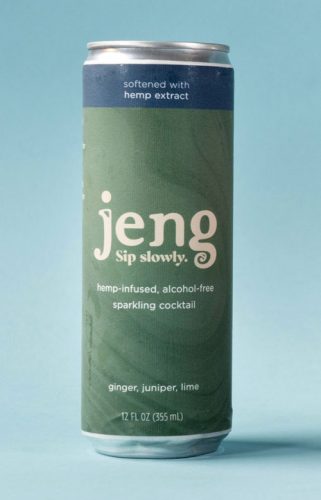

Don’t call it a mocktail
Don’t call it a mocktail. That’s the one thing we tell our team, our customers, and anyone else who will listen. ‘Mocktail’ diminishes the effort it takes to create these products and the experience a person has with it; it implies that what you’re getting isn’t quite the real thing. Nothing can be further from the truth.
A good cocktail (or beer, wine, spirit, etc.) is far more than a mere delivery device for alcohol. It’s an experience of the senses and the fact that there’s alcohol in a traditional cocktail is almost irrelevant.
The days of the non-drinker being left out are over. The goal of any no/low company should be to create drinks that rival traditional beverages in terms of flavour, mouthfeel and experience. We should reward the sober-curious with a drink that creates cocktail envy; one that puts the temperate on equal footing with the tippled.
A final word about cannabis
Cannabis has gone mainstream and it’s influencing how we drink. In the states where it is legal, patrons are consuming cannabis before going out to restaurants, bars, concerts and events. Rather than consuming alcohol, which could create a negative effect on their experience (a situation sometimes called ‘cross-fading’), customers are requesting alcohol alternatives. We hear this story a lot from bar owners who host events. Rather than ordering drinks at the bar, patrons are simply drinking water as they enjoy the show.
In this respect, cannabis legalisation and no/low beverages are directly related. The more our society embraces weed, the less alcohol we’ll need.
Last call
Looking back at last year’s discussion, perhaps we should have been asked: ‘Is this the beginning of the beginning of alcohol-free?’ I’m sure the consensus would have been an emphatic, ‘Yes, alcohol-free is alive!’
But is it a fad, a trend, a movement, or a new way of life? The answer is all of the above. Just like fashion, music, food and technology (and anything else, for that matter), the path of the no/low beverage is long and winding. In any case, it will soon be a way of life, just like almond milk, bottled water, diet soda, canned beer,14 and every other industry disruption we now take for granted.
About the author
Christopher Lackner is the Co‑founder of jeng, LLC, makers of premium alcohol-free, hemp‑infused, ready‑to‑drink beverages. jeng replicates classic flavours like Moscow mule, Paloma, and ‘jeng & tonic’ to create a true cocktail experience but without the alcohol. Launched in early 2021, jeng is available throughout metropolitan New York and Chicago, and online at sipjeng.com. Christopher also consults on regulatory, marketing and public policy issues surrounding the hemp industry.
References
- Non Alcoholic Drinks | Barrel Aged Non Alcoholic Spirits | Spiritless [Internet]. Spiritless. 2022 [cited 18 January 2022]. Available from: https://spiritless.com
- Home | Brooklyn Brewery [Internet]. Brooklyn Brewery. 2022 [cited 18 January 2022]. Available from: https://brooklynbrewery.com/
- Sipjeng [Internet]. jeng. 2022 [cited 18 January 2022]. Available from: https://sipjeng.com/
- Data S, Watson B, Gatza P, Obenchain A. National Beer Sales & Production Data [Internet]. Brewers Association. 2022 [cited 18 January 2022]. Available from: https://www.brewersassociation.org/statistics-and-data/national-beer-stats/
- Spirits take market share from beer and wine in US – The Spirits Business [Internet]. The Spirits Business. 2022 [cited 18 January 2022]. Available from: https://www.thespiritsbusiness.com/2021/01/spirits-take-market-share-from-beer-and-wine-in-us/
- U.S. wine consumption drops for first time in 25 years [Internet]. TheHill. 2022 [cited 18 January 2022]. Available from: https://thehill.com/homenews/news/478060-us-wine-consumption-dropped-for-first-time-in-a-quarter-century-last-year
- Brands like White Claw and Truly changed the way Americans drink. But a crowded market and changing consumer behavior may have officially ended the hard seltzer craze. [Internet]. Business Insider. 2022 [cited 18 January 2022]. Available from: https://www.businessinsider.com/hard-seltzer-craze-timeline-white-claw-truly-bud-light-seltzer-2021-10
- 28 Drunk Tattoos That’ll Make You Smile, Cringe, And Probably Never Drink Again [Internet]. BuzzFeed. 2022 [cited 18 January 2022]. Available from: https://www.buzzfeed.com/sydrobinson1/drunk-tattoos-thatll-make-you-smile-and-cringe
- Brochures and Fact Sheets | National Institute on Alcohol Abuse and Alcoholism (NIAAA) [Internet]. Pubs.niaaa.nih.gov. 2022 [cited 18 January 2022]. Available from: https://pubs.niaaa.nih.gov/
- Many Americans are looking for a bar experience without the buzz [Internet]. NielsenIQ. 2022 [cited 18 January 2022]. Available from: https://nielseniq.com/global/en/insights/analysis/2019/many-americans-are-looking-for-a-bar-experience-without-the-buzz/
- Paul K. Why millennials prefer cannabis to booze: ‘Zero enjoyment out of drinking’ [Internet]. MarketWatch. 2022 [cited 18 January 2022]. Available from: https://www.marketwatch.com/story/millennials-appear-to-like-cannabis-more-than-booze-2018-09-26
- Herrington A. Marijuana Is Replacing Alcohol For Nearly Half Of Cannabis Consumers During The Pandemic [Internet]. Forbes. 2022 [cited 18 January 2022]. Available from: https://www.forbes.com/sites/ajherrington/2021/12/31/marijuana-is-replacing-alcohol-for-nearly-half-of-cannabis-consumers-during-the-pandemic/
- Analysts: CBD-Infused Food, Beverage Market Poised for ‘Aggressive Expansion’ – The Food Institute [Internet]. The Food Institute. 2022 [cited 18 January 2022]. Available from: https://foodinstitute.com/focus/industry-insiders-cbd-infused-food-beverage-market-poised-for-aggressive-expansion/
- First canned beer goes on sale [Internet]. HISTORY. 2022 [cited 18 January 2022]. Available from: https://www.history.com/this-day-in-history/first-canned-beer-goes-on-sale
You may also like:
- Alcohol-free – I’ll drink to that!
- Transparency in alcohol-free drinks market is needed
- Is alcohol worse than cannabis?
- Is TikTok portraying alcohol consumption in the wrong light?
- Are women still confronted with obstacles in the alcohol industry?
Issue
Related topics
Beverages, CBD hemp & cannabis, Health & Nutrition, New product development (NPD), The consumer



